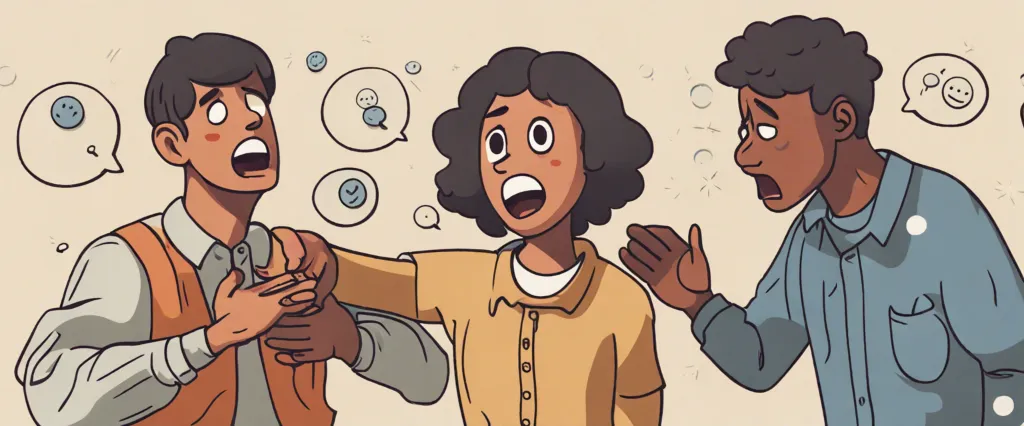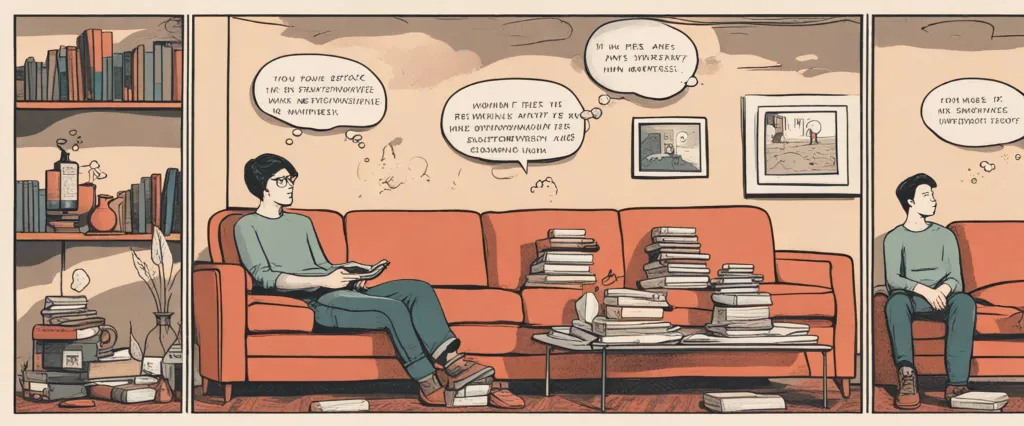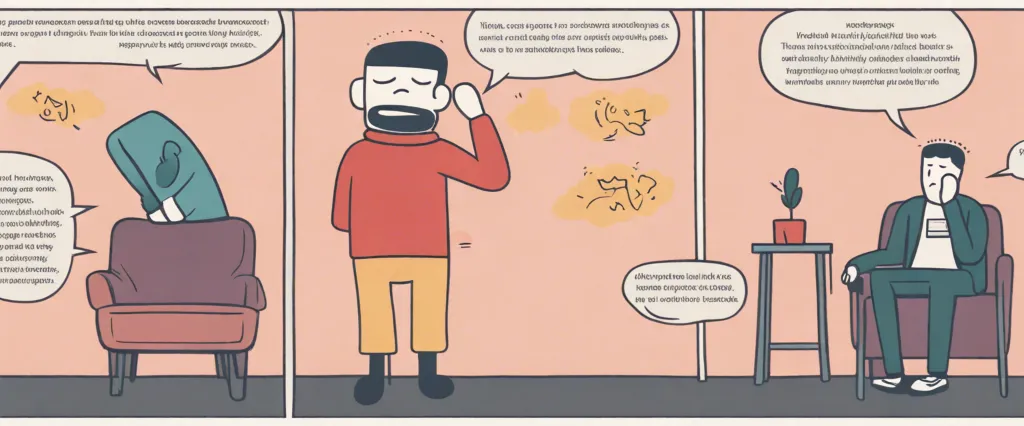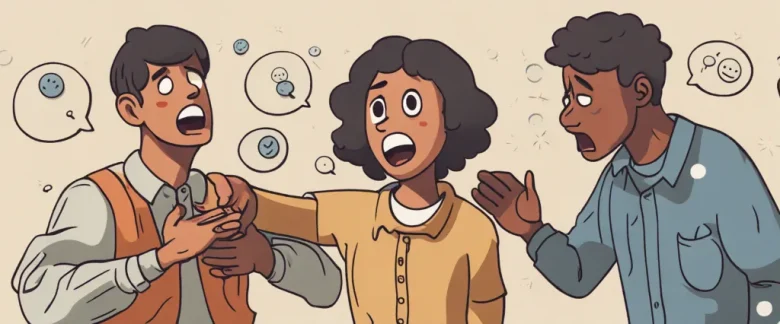
In his book “Emotional First Aid,” renowned psychologist Guy Winch brings forth a groundbreaking approach to healing emotional wounds. As human beings, we are often meticulous when it comes to physical injuries, yet we tend to neglect the significance of attending to our emotional well-being. Winch addresses this crucial aspect and guides readers through a series of practical techniques and insightful strategies to help mend emotional pain. As a licensed psychologist, TED speaker, and bestselling author, Guy Winch has dedicated his career to exploring the impact of emotional health on our overall happiness and success. With his profound understanding of the human psyche, Winch unlocks the secrets to emotionally healing and empowers readers with the necessary tools to lead happier, healthier lives.
Chapter 1: The Importance of Emotional First Aid
Chapter 1: The Importance of Emotional First Aid from the book Emotional First Aid by Guy Winch emphasizes the significance of addressing emotional wounds just like we would address physical injuries. Winch argues that we often neglect our psychological well-being, despite the detrimental effects that unresolved emotional pain can have on our overall health and happiness.
The chapter begins by highlighting the prevalence of emotional pain. Just as we experience physical injuries in our daily lives, we also encounter emotional injuries, such as rejection, failure, and loneliness. However, while we readily tend to physical injuries with immediate care, emotional injuries are often ignored or neglected, which can lead to long-term consequences.
Winch points out that emotional wounds, if left untreated, can impact various aspects of our lives. For example, unresolved emotional pain can affect our self-esteem, relationships, productivity, and even physical health. Moreover, it can perpetuate cycles of negative thoughts and behaviors, further exacerbating our emotional distress.
The chapter emphasizes the need for emotional first aid to address these wounds promptly and effectively. Winch encourages readers to adopt a proactive approach to their emotional well-being, including recognizing the signs of emotional pain and actively working to treat and heal these wounds.
By providing anecdotes and research-based evidence, Winch stresses the importance of addressing emotional injuries and building emotional resilience. He argues that just as we have been taught CPR to save a person’s life during a cardiac event, we should also learn emotional first aid techniques to heal our emotional wounds.
In conclusion, Chapter 1 of Emotional First Aid brings attention to the significance of emotional well-being and the need to address emotional wounds with the same urgency as physical injuries. By understanding the impact of unresolved emotional pain and adopting effective strategies, we can take a proactive approach to nurturing our emotional health and ultimately lead happier and healthier lives.
Chapter 2: Rejection and Failure
Chapter 2 of “Emotional First Aid” by Guy Winch focuses on the topic of rejection and failure and how they affect our emotional well-being. The chapter starts by emphasizing the universality of rejection and failure, as everyone experiences it at some point in their lives. Winch argues that the emotional pain we feel after being rejected or experiencing failure is often disregarded, which can have long-lasting negative effects on our mental health.
The author explains that rejection activates the same areas in the brain as physical pain, making it just as distressing. He highlights the importance of recognizing and addressing these emotional wounds to prevent them from festering and impacting our self-esteem and sense of worth. Winch provides several examples to demonstrate how rejection can be damaging, such as how rejections in job applications can elicit feelings of inadequacy and discourage further attempts.
Moreover, the chapter delves into the consequences of failure, particularly the fear of trying again and the impact it has on our motivation and self-confidence. The fear of failure can lead to avoidance behaviors and prevent us from pursuing our goals or taking risks.
Winch introduces various strategies to cope with rejection and failure, including developing self-compassion, reframing negative thoughts, and seeking social support. He encourages readers to challenge the negativity associated with rejection and failure, focusing instead on potential growth opportunities and learning experiences. The author also emphasizes the importance of maintaining resilience and perseverance in the face of setbacks.
Overall, Chapter 2 of “Emotional First Aid” addresses the emotional toll of rejection and failure, offering practical advice and techniques to heal and grow from these experiences.
Chapter 3: Loneliness and Isolation
Chapter 3 of “Emotional First Aid” by Guy Winch focuses on the topics of loneliness and isolation. The chapter explores the detrimental effects of these emotional experiences and offers strategies to help individuals combat them.
Loneliness is described as a deeply distressing emotion that arises when our need for social connection is not fulfilled. Winch explains that although we may be surrounded by people, we can still feel lonely due to a lack of meaningful connections. The chapter highlights the various ways in which loneliness affects our mental and physical health, including increased stress levels, compromised immune functioning, and heightened risk of depression and anxiety.
Isolation, on the other hand, is a state of being physically or emotionally detached from others. Winch explains how isolation often stems from a fear of rejection or vulnerability and can lead to feelings of unworthiness and despair. He emphasizes that isolation can be particularly harmful as it deprives individuals of the support and understanding that human connection provides.
To combat loneliness and isolation, Winch suggests several strategies. Firstly, he encourages individuals to challenge negative self-perception and recognize that their feelings of loneliness do not define their worth or desirability. Second, he emphasizes the importance of reaching out to others and fostering deep and meaningful connections. This can be done through various means, such as joining clubs or organizations, participating in social activities, and utilizing technology to connect with others. Finally, the chapter stresses the significance of cultivating self-compassion and engaging in self-care activities to build resilience against loneliness and isolation.
In summary, Chapter 3 of “Emotional First Aid” highlights the detrimental effects of loneliness and isolation while providing practical strategies to combat these emotions. By challenging negative self-perceptions, fostering meaningful connections, and practicing self-compassion, individuals can alleviate their feelings of loneliness and isolation and improve their overall well-being.
Chapter 4: Guilt and Regret

Chapter 4: Guilt and Regret of “Emotional First Aid” by Guy Winch explores the powerful emotions of guilt and regret, their impact on our mental well-being, and strategies to overcome them. The chapter emphasizes that guilt and regret can be debilitating if not properly addressed, leading to negative self-perception, diminished self-worth, and even depression.
Winch explains that guilt is the distressing feeling that arises when we believe we have done something morally wrong, while regret refers to the feeling of sadness or disappointment over a missed opportunity or a past decision. Both emotions can be overwhelming, but they serve distinct purposes. Guilt motivates us to make amends and repair relationships, whereas regret helps us learn from past experiences and make better choices in the future.
The author highlights situations where guilt and regret can become excessive and unhealthy. He provides examples such as obsessing over ‘what if’ scenarios or replaying past events repeatedly in our minds. Winch suggests that a productive way to deal with guilt and regret is to first acknowledge and validate these emotions, understand the lessons they offer, and then channel them towards growth and self-improvement instead of dwelling on the negativity.
Furthermore, the chapter presents practical techniques to overcome excessive guilt and regret. These include reaching out to the affected person and taking responsibility for our actions, forgiving ourselves, and learning to let go of the past. Winch also explores the benefits of self-compassion and how treating ourselves with kindness and understanding can aid in healing from guilt and regret.
In summary, Chapter 4 of “Emotional First Aid” delves into the emotions of guilt and regret, emphasizing their impact on mental health. By understanding their purpose, recognizing excessive guilt or regret, and implementing strategies like self-compassion and forgiveness, individuals can effectively navigate these emotions and promote emotional well-being.
Chapter 5: Rumination and Self-Criticism
Chapter 5 of “Emotional First Aid” by Guy Winch focuses on the negative self-talk patterns of rumination and self-criticism. Winch begins by explaining how rumination refers to the act of constantly replaying negative thoughts or experiences in our minds, often without finding a solution or resolution. This habit can lead to an amplification of negative emotions, as well as increased levels of stress and anxiety.
The chapter delves into the various ways in which rumination can be detrimental to our emotional well-being. For instance, it can impair problem-solving abilities and hinder our capacity to move on from distressing situations. Moreover, rumination can intensify feelings of anger, sadness, and regret, causing a vicious cycle wherein negative emotions persist and escalate.
Winch also addresses self-criticism, another damaging pattern that individuals often engage in. He explains how common it is for people to excessively blame themselves for failures or shortcomings. Self-criticism can lead to feelings of worthlessness, low self-esteem, and even depression.
To counteract the negative effects of rumination and self-criticism, Winch suggests several helpful strategies. One approach involves reframing negative thoughts and challenging their accuracy by considering alternative interpretations or explanations. Another technique is to redirect our attention by engaging in activities that provide distraction, pleasure, or relaxation. Additionally, practicing self-compassion and treating ourselves with kindness and understanding can be an effective way to combat self-criticism.
By recognizing the harmful impact of rumination and self-criticism and implementing these strategies, individuals can take proactive steps towards improving their emotional health and well-being.
Chapter 6: Grief and Loss
Chapter 6 of “Emotional First Aid” by Guy Winch focuses on the topic of grief and loss. In this chapter, the author explores the many ways loss affects our emotions and mental well-being, as well as the importance of properly coping with these experiences.
First, Winch explains that grief and loss can stem from a variety of sources, including the death of a loved one, the end of a relationship, or the loss of a job. Regardless of the cause, these experiences can elicit intense emotions such as sadness, anger, guilt, and fear. If not properly addressed, these emotions can lead to long-term complications, including depression and anxiety.
The author emphasizes the significance of acknowledging and grieving our losses, as many people tend to suppress their emotions or downplay the impact of the loss. He suggests strategies for effective grieving, such as allowing oneself to experience and express the pain, seeking support from loved ones or support groups, and finding ways to commemorate the person or thing that was lost. Winch also discusses the potential pitfalls of grieving, including unhealthy coping mechanisms like self-medicating or avoiding the pain altogether.
Furthermore, the chapter explores the misunderstandings and stigmas surrounding grief. The author emphasizes that grief is a highly individual experience, and therefore, there is no “right” or “wrong” way to grieve. He also addresses common misconceptions about the process, such as the notion that time heals all wounds. Instead, Winch argues that active coping strategies are necessary to overcome grief and loss.
In conclusion, Chapter 6 of “Emotional First Aid” provides valuable insights and strategies for dealing with grief and loss. By recognizing the importance of properly grieving and understanding the common misconceptions surrounding the process, individuals can navigate their losses in a healthier and more effective manner.
Chapter 7: Trauma and Emotional Injuries
Chapter 7 of “Emotional First Aid” by Guy Winch explores the topic of trauma and emotional injuries and how they affect our mental well-being. The chapter highlights the importance of acknowledging and addressing these emotional wounds for our long-term psychological health.
According to Winch, trauma is often associated with physically visible injuries, but it can also deeply impact our emotions. Emotional injuries can result from experiences such as the loss of a loved one, a breakup, or being a victim of abuse or violence. These events can leave lasting emotional scars that affect our thoughts, emotions, and behaviors.
The chapter emphasizes that traumatic events can disrupt our sense of safety, control, and trust. This disruption can lead to negative consequences such as anxiety, depression, or even post-traumatic stress disorder (PTSD). Winch warns that if left unaddressed, emotional injuries can create a vicious cycle, affecting our relationships, work, and overall quality of life.
To heal from trauma and emotional injuries, Winch suggests several strategies. One important step is acknowledging the pain and understanding that it is not a sign of weakness to seek help. He explains the benefits of seeking therapy, as well as engaging in activities that promote self-compassion and self-care.
Furthermore, Winch emphasizes the healing power of expressing emotions and sharing our stories. By discussing our experiences and connecting with others who have gone through similar trauma, we can find support and validate our emotions. This allows us to build resilience and create a sense of empowerment.
In conclusion, Chapter 7 of “Emotional First Aid” highlights the significance of addressing and healing from trauma and emotional injuries. By recognizing the impact of these events on our mental health and using strategies like seeking therapy, practicing self-compassion, and sharing our stories, we can begin the healing process and restore our emotional well-being.

Chapter 8: Building Emotional Resilience
Chapter 8 of “Emotional First Aid” by Guy Winch is titled “Building Emotional Resilience.” This chapter focuses on providing techniques to strengthen our emotional resilience, which is crucial for recovering from setbacks, facing challenges, and developing a more robust emotional state.
To begin, Winch highlights the importance of challenging our negative self-talk and reframing our thoughts. Negative self-talk can have a significant impact on our emotional well-being and resilience. By recognizing and reshaping negative thoughts, we can change our perspective and create a more constructive and positive mental framework.
The author also emphasizes the significance of self-compassion as a tool for building emotional resilience. Self-compassion involves treating ourselves with kindness, understanding, and acceptance, even when facing difficulties. It helps us to be more resilient in the face of setbacks and reduces the likelihood of us becoming overwhelmed by negative emotions.
Furthermore, the chapter explores the importance of setting realistic expectations and goals. Winch explains that excessively high expectations can lead to disappointment and demoralization, making it difficult to bounce back from setbacks. Developing a more balanced and realistic mindset allows us to cultivate emotional resilience and cope better with adversity.
The author provides practical exercises and strategies for building emotional resilience throughout the chapter. These include practicing self-compassion exercises, challenging negative thoughts, and setting achievable goals. By actively engaging in these activities, individuals can strengthen their emotional resilience and develop a more robust ability to cope with life’s challenges.
Overall, Chapter 8 of “Emotional First Aid” emphasizes the significance of building emotional resilience through techniques such as reframing negative thoughts, practicing self-compassion, and setting realistic expectations. By implementing these strategies and actively engaging in resilience-building exercises, individuals can enhance their ability to bounce back from setbacks and maintain emotional well-being.
After Reading
In conclusion, “Emotional First Aid” by Guy Winch serves as a valuable guide to navigating and healing our emotional wounds. The book emphasizes the significance of tending to our psychological well-being, just as we would provide first aid for physical injuries. Winch provides practical strategies and techniques to help individuals cope with common emotional challenges such as rejection, failure, and guilt, assisting readers in building emotional resilience and leading happier lives. By destigmatizing emotional pain and highlighting the importance of giving it the attention it deserves, this book is a powerful tool for anyone seeking to better understand and care for their own emotional health.
1. The Alchemist” by Paulo Coelho: This enchanting novel follows the journey of a young shepherd, Santiago, who goes on a quest to find his personal legend. This beautifully written story explores the themes of following one’s dreams, self-discovery, and the importance of listening to one’s heart.
2. “To Kill a Mockingbird” by Harper Lee: Set in the racially charged 1930s, this classic American novel explores themes of racial injustice, innocence, and the power of empathy. Through the eyes of Scout Finch, the story offers a poignant commentary on prejudice and social inequality.
3. The Power of Now” by Eckhart Tolle: This transformative book offers profound insights into living in the present moment and finding inner peace. Tolle explores how to let go of past regrets and future anxieties, and instead embrace the power of now to create a fulfilling and authentic life.
4. “The Kite Runner” by Khaled Hosseini: Set against the backdrop of Afghanistan’s tumultuous history, this unforgettable novel explores themes of friendship, guilt, and redemption. Hosseini’s poignant storytelling captures the complexities of human relationships and the enduring power of love.
5. “The Happiness Project” by Gretchen Rubin: In this self-help memoir, Rubin takes readers on her year-long journey to find happiness and fulfillment in everyday life. Through practical advice, personal anecdotes, and inspiring examples, she shares valuable insights on cultivating happiness, gratitude, and contentment.



